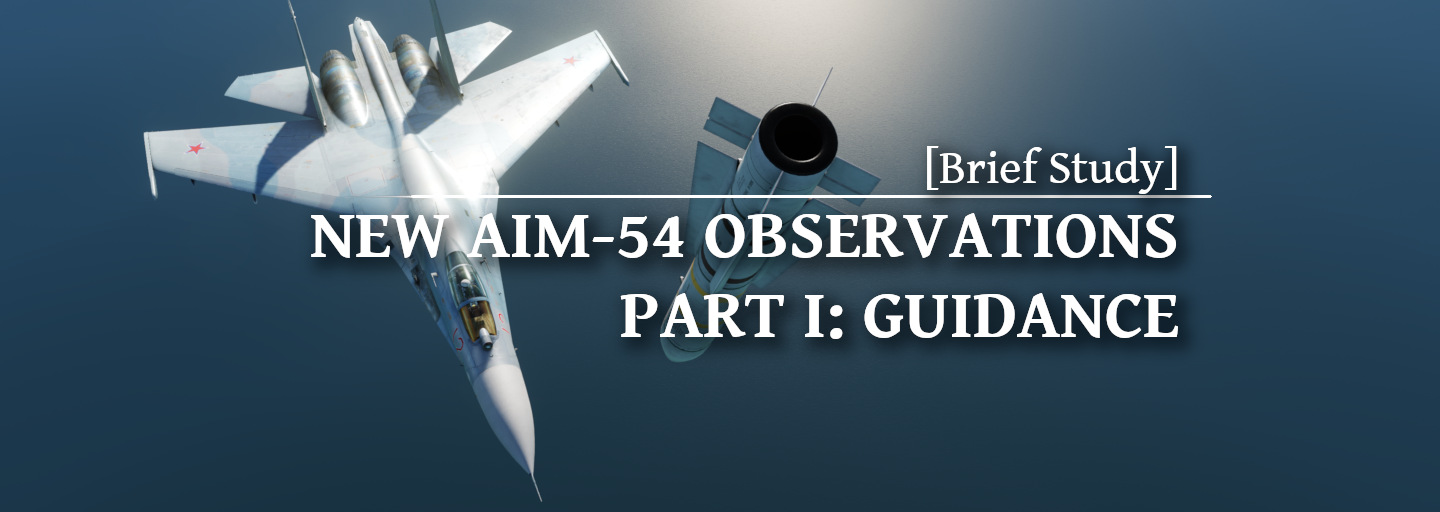Unfortunately I was off when the changes hit, so I’m trying to catch up, but I don’t have much time. Therefore, the observations are “quick and dirty” notes of the most obvious peculiarities I noticed.
The dataset will be shared when all parts of this study are completed.
Modus Operandi
The two criteria I used are the speed and the range at the impact. The total number of samples for Part I is about one hundred, plus two or three times that number in side tests. I would have preferred a much higher number of samples before drawing the preliminary conclusions, along the apex of the parabolic trajectory, but those numbers require TacView, whereas the speed at impact and the range at impact come straight from DCS. Hence, they are quicker to collect.
There are at least two sets of datapoints per scenario to minimise measuring errors. Still not enough, but there are no blatant discrepancies.
Targets are non-manoeuvering, and not dispensing CMs.
Now, preamissa’s off, let’s get to the observations:
AIM-54A TWS vs AIM-54A STT
In general, TWS provides slightly greater speed at impact, especially at long range. The advantage is minuscule, though. On the other hand, STT hits further. An interesting observation is the fact that TWS A, post activation, when TA is not irrelevant, arrives within the last few miles with an offset, then it “slides” onto the target almost sideways. Possible explanation: since the target is drifting, TA is increasing exponentially over time and the frequency of the TWS guidance is not high enough to provide accurate final steering before the handover to the seeker’s missile. Curiously, the terminal speed for the TWS is still higher than STT. I guess that STT corrects more whilst the missile is in the air, thus bleeding slightly more speed. This cost is offset by the more precise positioning at the handover, which should improve the odds if the target, now aware, tries to defend turning cold.
AIM-54C TWS vs AIM-54C STT
Not really much to say here, the numbers are quite similar overall. The advantage, hopefully at some point, would be having the target less aware of the missile incoming. It’d be great if ED could make the activation parametric: Small TGT SIZE would be quite cool with the new C logic (as we know already, at the moment is hardcoded to 10nm, at least for the AI).
AIM-54A Mk47 vs AIM-54C Mk47
This is an interesting one. In general, the A arrives faster in TWS, the C arrives earlier. Another case of tighter control equal a bit more energy lost, but more efficient endgame, perhaps. The only peculiar case in SET VIII, where the target was flying an S-shape patterns. This feels like a case where fewer corrections were actually useful, since the A noticeably bled much less speed, thus hitting earlier. This seems to be confirmed by the A TWS vs STT case, where A STT is much closer to C STT.
This is almost meme material and reminds me of the Tomcast episode where they said that the AWG-9 may not even notice that a target notched for a few seconds, due to how it worked, lol
Finally, the A tends to arrive “more vertical” and at a much higher number of Gs, sometimes almost perpendicular to the target, especially in TWS. It may be due to the guidance being less accurate?



AIM-54C Mk47 vs AIM-54C Mk60
The old Mk60 was a beast. In my 2019 model it blew away every other version: who cares of a X% greater chaff resistance, when the missile is coming 1 mach faster? Nowadays, it’s very different, but there are some interesting results.
In primis, it consistently hit farther. An in-depth analysis of the trajectory is necessary to explain this. Perhaps it doesn’t loft as high, thus going “straight” earlier. This may be confirmed by the fact that the speed at the impact is lower consistently, besides in some cases: at higher altitude and longer range, the Mk60 has greater speed at impact. When it happens, however, the difference in terms of range is not as pronounced as in the other cases. Intriguing.
Additional notes
I had a problem of ghost tracks in a scenario where multiple targets were in the air (SET V, IIRC). It didn’t happen when I used TWS Manual to highlight only the target I wanted, or told the WCS to disregard the others.
The issue of the STT track disappearing from the DDD and appearing as lost on the TID at high ATA is still present.
I didn’t consider the A Mk60 initially, but the results are quite interesting, and I may re-do the tests for that version as well, but definitely include them for the following parts of the study.
Conclusion
It’s too early to take solid and numbers-backed conclusions, but the feeling is that the missile is much slower, but bleeds incredibly less speed than before. Thus, if the Phoenix can be launched faster, the difference in terms of terminal speed won’t be as pronounced. It will just take longer to get there. Before, a target turning would defeat an AIM-54 coming much faster just by slightly turning. This is not the case any more.
The next part of this brief collection of observations will focus on the energy side, for much as changed, and a comparison with the older 2019 study is worth it to assess new timelines.
